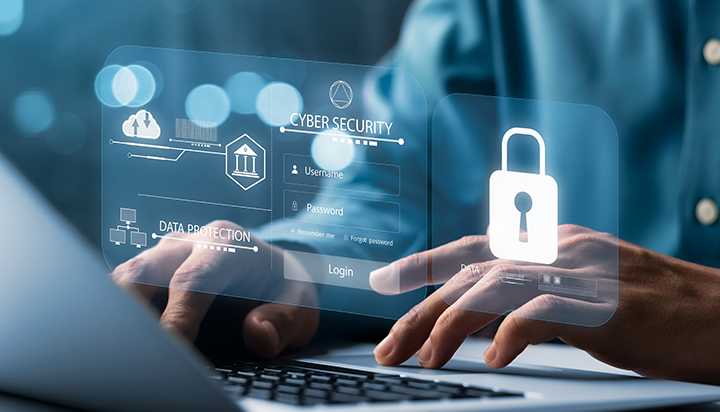What is the difference between cybersecurity and enterprise security?
What is the difference between cybersecurity and enterprise security?

When it comes to cybersecurity and enterprise security, many organizations often need clarification about what separates one from the other. Cybersecurity and enterprise security refer to two distinct sets of tools and measures designed to keep organizations safe from cybersecurity threats. Cybersecurity focuses on protecting networks, systems, and data from cybersecurity attacks such as malware, hacking, and phishing. Enterprise security is a broader term encompassing cybersecurity and other strategies for protecting an organization’s physical assets, corporate policies, and regulatory compliance requirements.
These strategies include proactive measures such as setting strong access control policies or installing a comprehensive EDR solution (Endpoint Detection & Response). The key difference lies in the scope of coverage: cybersecurity specifically addresses the digital threats that must be managed, while enterprise security applies more widely to all aspects of managing risk within an organization.
What is Cybersecurity?
Cybersecurity is an increasingly important issue for businesses of all sizes, as the modern world runs heavily on digital infrastructure and networks. Cybersecurity can be broken down into concepts, such as enterprise security, which specifically protects the cybersecurity of a business or organization. Endpoint Detection & Response (EDR) solutions are enterprise cybersecurity systems that provide 24/7 monitoring and protection to organizations against threats like malware and malicious actors trying to gain access to sensitive data. It’s becoming more common for companies to invest in powerful cybersecurity technologies like EDR to ensure that their digital assets remain safe and secure in today’s increasingly connected global market.
What is Enterprise Security?
Enterprise security is a cybersecurity approach designed to protect businesses, organizations, and other entities by creating a secure digital environment. It incorporates multiple layers of cybersecurity technology, including firewalls, endpoint protection & response (EDR), data loss prevention systems, and intrusion detection/prevention systems, to ensure that confidential information is appropriately handled, and sensitive transactions are made with only authorized users. The goal of enterprise security is to keep confidential corporate posts safe from cyber-attacks such as phishing or otherwise malicious attacks against networks, hardware, or software. This kind of cybersecurity strategy offers advanced threat management capabilities and can help companies mitigate risks by identifying vulnerabilities in the system that can be patched up with cybersecurity solutions, like an EDR solution specifically tailored for the enterprise environment.
Cybersecurity Vs. Enterprise Security
While cybersecurity is focused on defending computer networks and systems against malicious attacks and data breaches, enterprise security encompasses a much broader scope of protection, including physical safety, personnel security, legal compliance, operations security, and more. In contrast, enterprise security covers a wide range of activities, such as physical access control, personnel secondment policies, and other insider threats to an organization’s operations. It goes beyond the digital realm and involves safeguarding the organization’s assets from any potential intrusions or harm. Additionally, enterprise security also focuses on protecting an organization’s brand by ensuring compliance with applicable laws, regulations, and standards.
Cybersecurity consists of technologies such as firewalls or antivirus software that can detect malicious activities like malware or phishing attempts. Cybersecurity also involves developing processes for responding to any detected threats. It’s important to note that cybersecurity focuses on the prevention and detection of cyber threats but does not necessarily address any potential issues stemming from them, such as financial losses or reputational damage.
EDR (Endpoint Detection & Response) – A Cybersecurity Solution for Enterprises
When it comes to cybersecurity solutions for enterprises, many organizations are now turning towards Endpoint Detection & Response (EDR) software. EDR helps detect malicious activities on the endpoint—the device that users use to connect to your network—and can be used in conjunction with cybersecurity tools like firewalls and antivirus systems to provide an extra layer of protection.
Overall, cybersecurity is focused on protecting computer networks and systems from malicious activities, while enterprise security covers a much wider range of components, including physical safety, personnel security, legal compliance, operations security, and more. For organizations looking for complete end-to-end cybersecurity solutions, EDR software can help improve their cybersecurity posture by providing an added layer of protection to their existing cybersecurity tools. With the right combination of cybersecurity and enterprise security tools, organizations can ensure that they remain secure against current threats as well as any future ones.
Conclusion
Cybersecurity and Enterprise security are two distinct terms that refer to different forms of protection. Cybersecurity is mainly concerned with the prevention and detection of cyber threats, while enterprise security is a broad term used to define the safety checks an organization applies when it comes to personnel, assets, operations, legal compliance, etc. In order to ensure comprehensive security for a business or organization, cybersecurity solutions such as firewalls and antivirus should be employed in conjunction with EDR software for added protection against malicious activities on the endpoint. By acting on cybersecurity measures along with enterprise security policies, organizations can successfully protect themselves against current threats as well as emerging ones.





